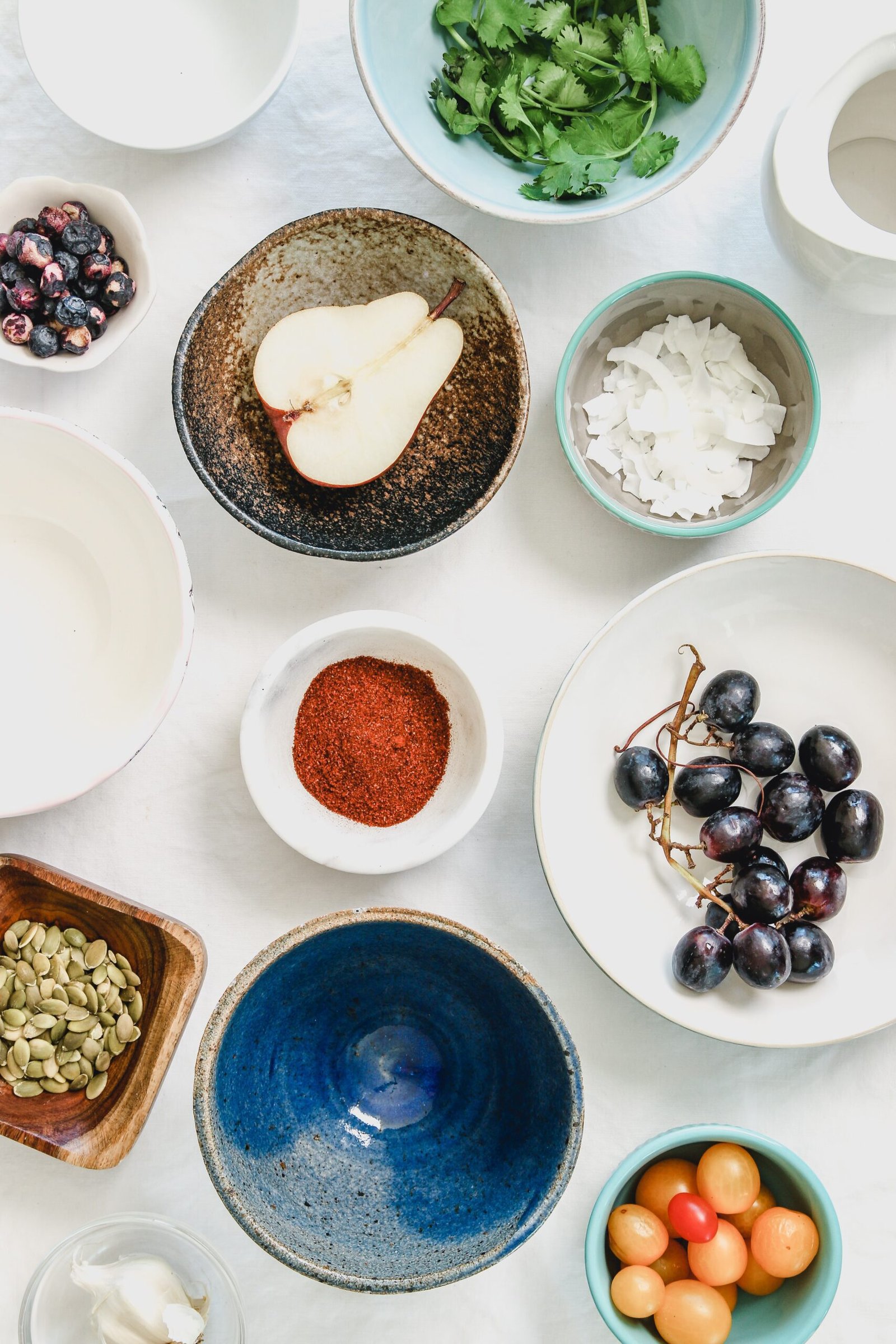In Korea, the streets come alive with a tantalizing array of mouthwatering street food dishes that are loved by locals and tourists alike. From savory delights like tteokbokki and hotteok to refreshing treats like bingsu and pajeon, the streets of Korea offer a culinary adventure that will leave you craving for more. So, if you’re curious to discover the popular street food dishes that Korea has to offer, get ready to embark on a gastronomic journey that will leave your taste buds in awe.
Tteokbokki
Tteokbokki is one of the most beloved and popular street food dishes in Korea. It is a spicy rice cake dish that combines chewy rice cakes (tteok) with fish cake (eomuk) in a delicious red chili sauce. The rice cakes are soft and slightly chewy, while the fish cake adds a unique texture to the dish. The sauce is the key component of tteokbokki, as it provides the dish with its signature spicy and flavorful taste. Tteokbokki sauce can vary in spiciness and sweetness, allowing you to choose the level of heat that suits your taste buds.
Spicy Rice Cake (tteok)
The main ingredient in tteokbokki is tteok, which are cylindrical-shaped rice cakes made from glutinous rice flour. These rice cakes are the perfect base for soaking up the mouthwatering sauce. The texture of tteok is soft and chewy, giving tteokbokki its distinct bite. The rice cakes are usually pre-boiled before being added to the sauce, ensuring that they are cooked evenly and have the perfect texture.
Fish Cake (eomuk)
Another essential ingredient in tteokbokki is eomuk, which is a type of fish cake. Eomuk is made from ground fish paste that is mixed with various ingredients such as surimi, starch, and vegetables. It is then formed into a rectangular shape and boiled. The fish cake adds a delicate taste and springy texture to the dish, complementing the tteok and the spicy sauce perfectly.
Sauce Variations
Tteokbokki sauce can be customized to suit different preferences. Some prefer a spicier sauce, while others enjoy a milder, sweeter flavor. The sauce typically consists of gochujang (Korean chili paste), soy sauce, sugar, garlic, and other seasonings. However, variations of the sauce can include additional ingredients like ketchup, honey, or even cheese to add a different dimension of flavor. The possibilities are endless when it comes to experimenting with tteokbokki sauce, allowing you to tailor the dish to your liking.
Bulgogi
Bulgogi is a classic Korean street food dish that features thinly sliced marinated beef that is grilled to perfection. The name “bulgogi” translates to “fire meat,” alluding to the traditional cooking method of grilling the meat over an open flame. It is a popular choice among locals and tourists alike, known for its tender and savory taste.
Marinated Beef
The key to delicious bulgogi lies in the marinade. Typically, bulgogi marinade consists of soy sauce, sesame oil, sugar, garlic, and other aromatics. This combination of ingredients gives the beef its rich, savory flavor that pairs perfectly with the grilling process. The marinade not only imparts flavor but also helps to tenderize the meat, resulting in melt-in-your-mouth goodness.
Grilling Method
Grilling is the traditional cooking method for bulgogi and adds a unique smokiness to the dish. The marinated beef slices are cooked on a grill or skillet until they are caramelized and slightly charred around the edges. The grilling process enhances the flavor of the marinade and gives the beef a delicious smoky taste.
Wrap Options
Once the beef is cooked to perfection, it is often enjoyed wrapped in lettuce or perilla leaves. This adds a refreshing and crisp element to the dish, balancing out the rich flavors of the beef. Additionally, other ingredients like sliced garlic, ssamjang (a spicy dipping sauce), and rice can be added to the wrap for added texture and taste.

Kimbap
Kimbap is a popular street food in Korea that consists of seaweed rice rolls filled with various ingredients. Similar to sushi, kimbap incorporates a variety of fillings and is rolled in a sheet of seaweed. It is a convenient and portable snack that is enjoyed by people of all ages.
Seaweed Rice Rolls
The foundation of kimbap is the seaweed, which is referred to as “gim” in Korean. The seaweed sheets are filled with seasoned rice and an assortment of ingredients before being rolled into a cylindrical shape. The rice acts as a binding agent, holding all the delicious fillings together. The seaweed adds a unique umami flavor and a satisfying crunch to each bite of kimbap.
Popular Fillings
Kimbap offers a wide range of fillings to cater to different preferences. Some common fillings include thinly sliced strips of carrot, cucumber, pickled radish, ham, egg omelet, and crab stick. These ingredients add a medley of colors, flavors, and textures to the kimbap, making each bite exciting and enjoyable. Kimbap can be customized based on personal taste, allowing you to create your perfect combination.
Rolling Techniques
Rolling kimbap requires skill and precision to ensure that the ingredients are evenly distributed and tightly packed. The process starts by placing the seaweed sheet on a bamboo mat, also known as a “makisu.” A layer of seasoned rice is then spread onto the seaweed, leaving a small border at the top. The fillings are arranged horizontally in the center of the rice, and the rolling begins by lifting the bamboo mat and tucking the fillings in tightly. With a gentle but firm pressure, the kimbap is rolled into a tight cylinder. Once rolled, the kimbap is sliced into bite-sized pieces, ready to be enjoyed.
Hotteok
Hotteok is a popular street food snack in Korea that consists of sweet pancakes filled with a variety of tasty ingredients. This treat is typically eaten during the winter months as it provides warmth and comfort on cold days. The crispy exterior and gooey, sweet filling make hotteok a favorite among locals and tourists alike.
Sweet Pancake
Hotteok is made from a simple pancake batter that is slightly sweetened with sugar. The batter is cooked on a griddle or in a pan until it forms a golden-brown crust. The key to a delicious hotteok lies in the contrast between the crispy exterior and the soft, sweet filling inside.
Filling Options
The filling is what sets hotteok apart from regular pancakes. Traditionally, the filling consists of a mixture of brown sugar, cinnamon, and chopped nuts. When the hotteok is cooked, the sugar in the filling melts and caramelizes, creating a sticky and sweet center. However, there are also variations of hotteok that include savory fillings such as cheese or vegetables. These unique twists add a different dimension of flavor to the sweet pancake.
Cooking Process
To make hotteok, the pancake batter is spooned onto a hot griddle or pan. Once the batter has spread out into a small circle, a generous amount of the filling is placed in the center. The edges of the pancake are then folded inward to encase the filling. The pancake is then cooked until it turns golden brown on both sides, ensuring that the filling is warm and gooey. Hotteok is typically served hot and fresh, making it the perfect snack to enjoy on a chilly day.

Odeng
Odeng, also known as eomuk or fish cake skewers, is a popular street food dish in Korea. These delicious skewers consist of boiled fish cake served on a stick, making them convenient and easy to eat on the go. Odeng is often enjoyed as a warm and comforting snack during the colder months.
Boiled Fish Cake Skewers
Odeng is made from fish cake, which is a type of processed seafood made from ground fish. The fish cake is typically shaped into logs or cylinders and skewered on a stick for easy handling. The skewered fish cake is then boiled in a flavorful broth until it becomes soft and pliable. The boiling process not only cooks the fish cake but also infuses it with the flavors of the broth.
Broth Variations
The broth used to cook the fish cake skewers can vary depending on personal preference and regional differences. Common broths include dashi, a Japanese-style fish stock, or anchovy broth, which is made from simmering dried anchovies. These broths add depth and richness to the fish cake, enhancing its natural seafood flavors. Some variations of odeng even involve skewering the fish cake with other ingredients like boiled eggs or vegetables, further enhancing the dish’s taste and visual appeal.
Popular Condiments
Odeng is often served with a variety of condiments that complement its flavors. Dipping sauces such as soy sauce, sesame oil, or sweet and spicy gochujang are commonly paired with odeng. These condiments provide additional layers of flavor and add a tangy or savory element to the fish cake skewers, enhancing the overall eating experience. Odeng can also be enjoyed on its own, savoring the natural taste and texture of the fish cake.
Japchae
Japchae is a delicious stir-fried dish made with glass noodles and a colorful medley of vegetables. This popular Korean street food is not only visually appealing but also offers a delightful combination of flavors and textures.
Stir-Fried Glass Noodles
The star ingredient in Japchae is the glass noodles, also known as dangmyeon, made from sweet potato starch. These noodles have a delicate and slightly chewy texture that absorbs the flavors of the sauce and other ingredients. Glass noodles are stir-fried to perfection with a delectable combination of vegetables, creating a harmonious mix of flavors.
Vegetable Medley
Japchae is packed with a vibrant assortment of vegetables, adding freshness and crunch to the dish. Some common vegetables used in Japchae include carrots, spinach, mushrooms, onions, and bell peppers. These vegetables are thinly sliced and sautéed individually before being tossed together in the stir-fried noodles. The combination of colors, textures, and flavors makes Japchae a visually appealing and satisfying dish.
Sesame Oil Seasoning
The sauce used to season Japchae plays a crucial role in enhancing its taste. The main seasoning is a mixture of soy sauce, sugar, and sesame oil. The sesame oil adds a nutty flavor and aroma that ties all the ingredients together. Other seasonings such as garlic, ginger, and black pepper can be added to further enhance the flavors. Japchae is often garnished with toasted sesame seeds, adding a crunchy texture and a hint of nuttiness.

Dakkochi
Dakkochi, or grilled chicken skewers, is a popular street food dish in Korea. These juicy and flavorful skewers are a favorite at festivals and outdoor markets. Dakkochi showcases the delicious combination of marinated grilled chicken and various garnishes that create a wonderful balance of flavors.
Grilled Chicken Skewers
Dakkochi features pieces of chicken marinated in a savory and slightly sweet marinade. The chicken is threaded onto skewers, making it convenient to eat while exploring the vibrant streets of Korea. Grilling the skewers over an open flame or on a hot grill adds a smoky char that enhances the taste of the chicken, giving it a delightful grilled flavor.
Marinade Ingredients
The marinade for Dakkochi typically includes a combination of soy sauce, sugar or honey, garlic, ginger, and sesame oil. These ingredients work together to infuse the chicken with a rich umami flavor and ensure that it stays moist and tender during the grilling process. The marinade can also incorporate other seasonings like Korean chili paste or rice wine for added complexity.
Garnish Options
Dakkochi is often served with a variety of garnishes that enhance the flavors and textures of the dish. Common garnishes include sliced green onions, sesame seeds, and a drizzle of extra marinade or spicy sauce for an extra kick. These garnishes provide freshness, crunch, and an added burst of flavor to the grilled chicken skewers, elevating the overall taste experience.
Bindaetteok
Bindaetteok, also known as mung bean pancakes, is a savory and hearty street food dish in Korea. These pancakes are made with ground mung beans and a delightful mix of vegetables, resulting in a crispy and flavorful treat.
Mung Bean Pancake
Bindaetteok is made primarily from mung beans that have been soaked, ground, and mixed with various ingredients. Mung bean flour is used as the base, providing a earthy flavor and a creamy texture to the pancake batter. The batter is then mixed with vegetables and seasonings, creating a perfectly balanced dish.
Texture and Flavor
The combination of mung beans, vegetables, and seasonings gives bindaetteok a unique texture and flavor. The pancakes are crispy on the outside, while the inside remains soft and packed with a savory medley of vegetables. The addition of ingredients such as kimchi, onions, and bean sprouts adds a hint of tanginess and crunch to each bite. Bindaetteok is best enjoyed when it is freshly cooked, allowing the pancake to retain its crispiness and the vegetables to remain vibrant and flavorful.
Accompanying Dipping Sauce
Bindaetteok is typically served with a dipping sauce that further enhances its taste. The sauce often consists of soy sauce, vinegar, sesame oil, and thinly sliced green onions. The dipping sauce adds a tangy and savory element, cutting through the richness of the pancake. Each bite of bindaetteok dipped in the sauce provides a burst of flavors that complement and balance the pancake’s textures and taste.

Gyeran-Bbang
Gyeran-Bbang, also known as egg bread or egg muffins, is a unique street food snack that blends together the flavors of eggs and bread. This delightful treat is enjoyed by many as a quick and satisfying snack on the go.
Egg Bread
Gyeran-Bbang is essentially a small bread loaf with a whole egg cooked inside. The bread is often slightly sweet and has a fluffy texture, providing a contrast to the rich and creamy egg. The combination of bread and egg creates a harmonious balance of flavors and textures, making Gyeran-Bbang a comforting and satisfying treat.
Unique Cooking Method
To make Gyeran-Bbang, the batter is poured into individual molds or cups. A whole egg is then cracked and placed on top of the batter in each cup, allowing the egg to cook along with the bread. The cups are then baked until the bread rises and turns golden brown, resulting in a beautiful and delicious individual egg bread. The end result is a warm and soft bread exterior with a perfectly cooked egg center, making it a delightful snack for any time of the day.
Additional Ingredients
While the traditional Gyeran-Bbang consists of just bread and egg, variations of this street food dish often include additional ingredients. Cheese, bacon, ham, or vegetables like spinach or green onions can be added to enhance the flavors and add a different dimension to the snack. These additional ingredients provide a burst of taste and texture, making each bite of Gyeran-Bbang a delightful surprise.
Hweori Gamja
Hweori Gamja, also known as twisty potato on a stick, is a popular street food item in Korea that offers a unique and visually appealing snack option. These spiral-cut potatoes are deep-fried until golden and crispy, making them irresistible to both locals and tourists.
Twisty Potato on a Stick
Hweori Gamja starts with a whole potato that is skewered on a stick. The potato is then cut into a continuous spiral shape, creating a visually stunning twisty pattern. This spiral-cut potato is stretched out along the stick and deep-fried until it becomes crispy on the outside and tender on the inside. The result is a mouthwatering snack with a perfect combination of textures.
Seasoning Options
Hweori Gamja can be enjoyed in its natural form or seasoned with various flavorings. After being fried, the potatoes are typically coated with a choice of seasonings such as cheese powder, barbecue flavoring, sour cream and onion, or simple salt. The seasonings add an extra layer of taste to the crispy potatoes, giving them a savory, tangy, or smoky flavor. The seasoning options are diverse, offering something for everyone’s palate.
Cooking Method
To make Hweori Gamja, the spiral-cut potato is deep-fried in hot oil until it turns golden brown and crispy. The deep-frying process ensures that the potato becomes cooked all the way through, resulting in a soft center and a crunchy exterior. This cooking method allows the flavors to develop and creates a delightful contrast of textures. The final product is a crispy and addictive snack that is perfect for munching on while exploring the bustling streets of Korea.
From tteokbokki to Hweori Gamja, Korean street food offers a wide array of delectable options that cater to different tastes and preferences. These dishes not only provide a burst of flavors but also offer a unique cultural experience. Whether you’re a fan of spicy rice cakes, savory pancakes, or grilled skewers, Korean street food is sure to satisfy your cravings and leave you wanting more. So next time you find yourself in Korea, be sure to indulge in these popular street food dishes and immerse yourself in the vibrant culinary scene.

